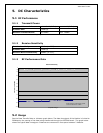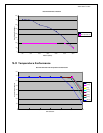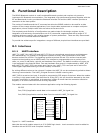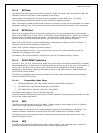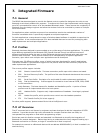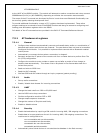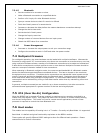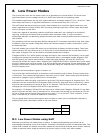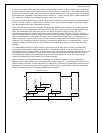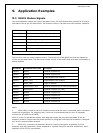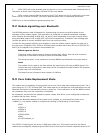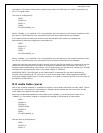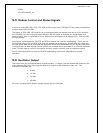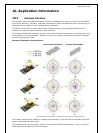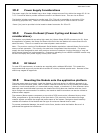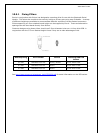
www.ezurio.com
A slave on the other hand does NOT have prior knowledge of when a packet will be received and has
to assume that a packet will be received from a master on every receive slot. This means that it has
to leave its receiving circuitry on for most of the receive slot duration. The result of this is high power
consumption as illustrated in the power table in Section 4.1, where a slave with no data transmission
still consumes around 31mA whereas a master consumes only 6mA.
This problem was identified very early in the evolution of Bluetooth (especially since headsets spend
all their time as a slave in a Bluetooth connection) and it was solved by having a mode called Sniff,
with appropriate lower layer negotiating protocol.
Sniff mode during connection is basically an agreement between the slave and its master that data
packets will only be exchanged for N timeslots every M slots. The slave can then assume that it will
never be contacted during N-M slots, and so can switch its power hungry circuitry off. The
specification goes further by also specifying a third parameter called ‘timeout’ (T) which specifies
‘extra’ timeslots that the slave will agree to listen for after receiving a valid data packet. Put another
way, if a data packet is received by the slave, then it knows that it MUST carry on listening for at
least T more slots. If within that T slot time period another data packet is received, then the timer is
restarted. This mechanism ensures low power consumption when there is no data transfer – at the
expense of latency. When there is a lot of data to be transferred, it acts as if sniff mode were not
enabled.
It is stated above that during sniff mode, a slave listens for N slots every M slots. The Bluetooth
specification states that a master can have up to 7 slaves attached to it with all slaves having
requested varying sniff parameters. It may therefore be impossible to guarantee that each slave gets
the M parameter it requested. In light of this, the protocol for enabling sniff mode specifies that a
requesting peer specify the M parameter as a minimum and maximum value. This will allow the
master to interleave the sniff modes for all slaves attached.
For this reason, the sniff parameters are specified in the BISM2 module via four S registers. S
Register 561 is used to specify ‘N’, S Register 562 is used to specify ‘T’ and S Registers 563/564 are
used to specify minimum ‘M’ and maximum ‘M’ respectively. Although the specification defines these
parameters in terms of timeslots, the S register values have to be specified in units of milliseconds
and the firmware does the necessary translation to timeslots.
Data Exhange
High Power Consumption
Low Power Consumption
M
Slots (Negotiated)
M
Slots (Negotiated)
N
Slots
N
Slots
N
Slots
T
Slots
T
Slots
T
Slots
T
Slots
T
Slots
Data Exchange
Data Exchange
Data Exchange
Data Exchange
Data Exchange



